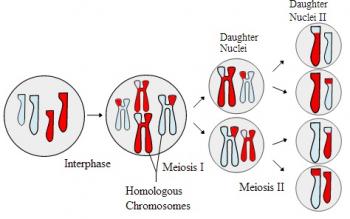The cell cycle, which occurs in both eukaryotes and prokaryotes, is a process which allows for a cell to be duplicated. In prokaryotes this mechanism is termed binary fission and in eukaryotes, the cell cycle consists of several stages.
Binary fission is a simpler process than mitosis. This process begins with the original cell DNA being duplicated so that two copies are present and can be attached to different parts of the cell membrane. After this, the cell becomes subdivided into two new cells, with each cell containing a piece of DNA. In the end, two identical cells are produced.
In eukaryotes the cell cycle is a more complex process which is comprised of multiple different phases. The phases are as follows:
- G0 Phase: In this phase cells are not dividing and have undergone quiescence. This may occur to prevent damaged cells from replicating or because the cell is fully differentiated.
- Interphase: This occurs right before cell division occurs and is a crucial step in the cell division process because it prepares a cell for division. Interphase begins with the G1 phase in which all biochemical functions, such as enzyme and other protein production, resume at an elevated rate. The next step is the S phase and this is when DNA replication takes place (meaning each chromosome is copied) and is a relatively quick step. The final stage is the G2 phase. This phase is more of a checkpoint to ensure that the cell is ready to divide and this is also the stage in which the cell continues to grow.
- Mitosis: This is the phase responsible for cell division, in which new daughter cells are produced, each containing their own nucleus. The daughter cells are identical to the original parent cell.
Title Image Credit: Wikimedia Commons
© BrainMass Inc. brainmass.com April 24, 2024, 2:45 pm ad1c9bdddf

